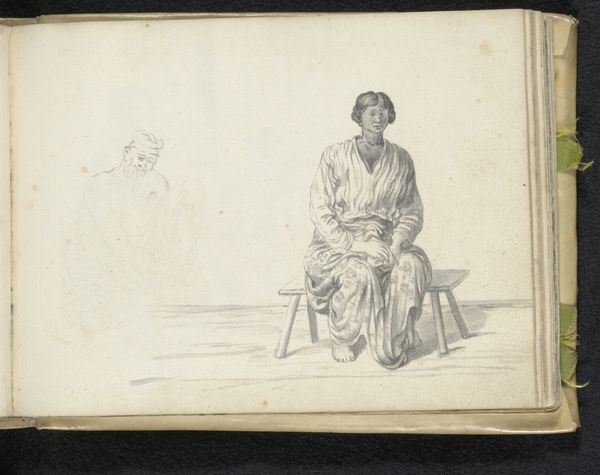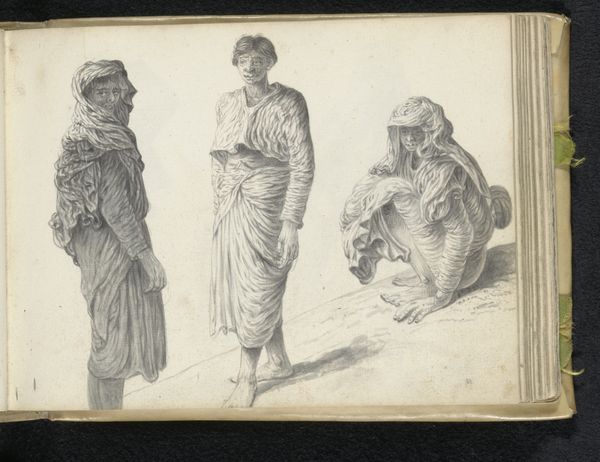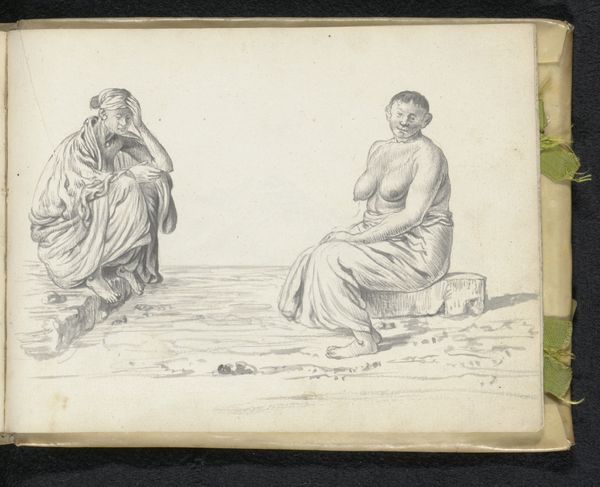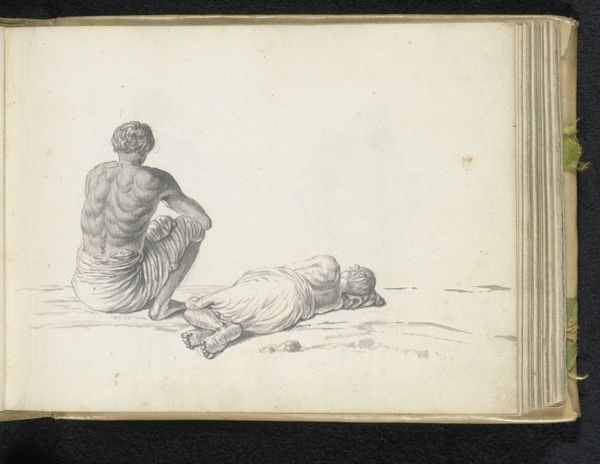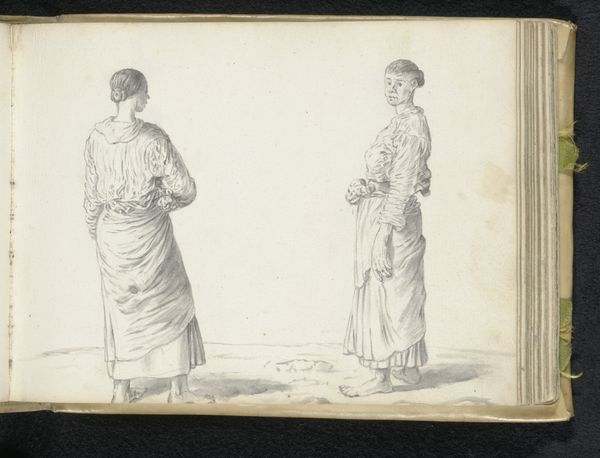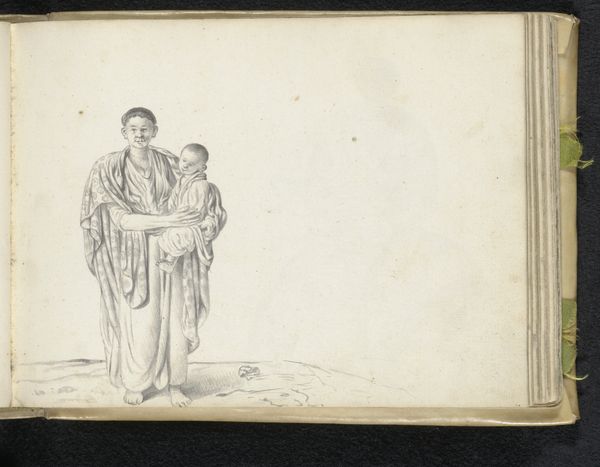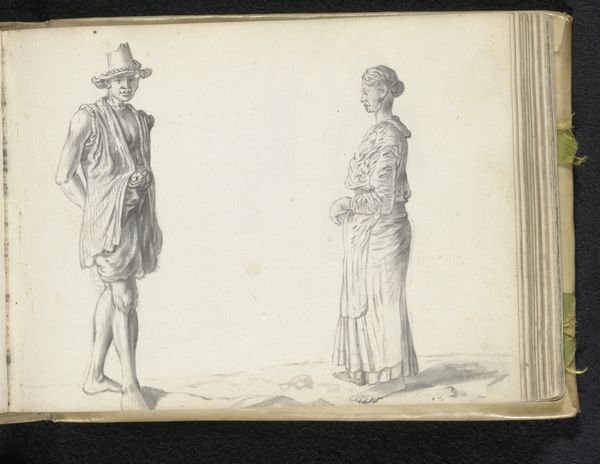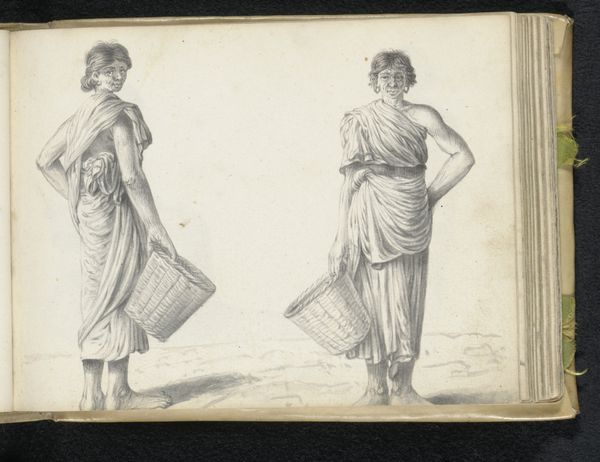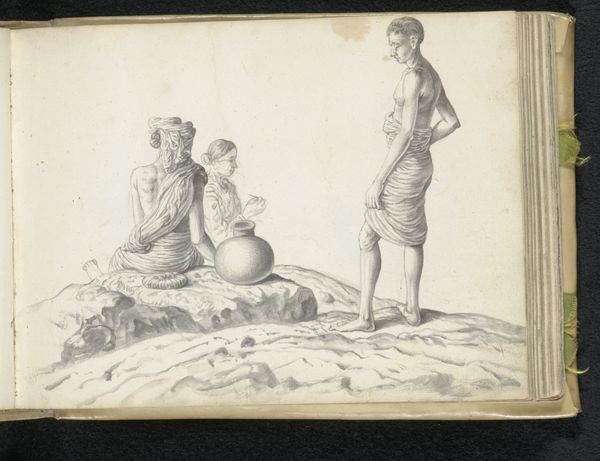
drawing, pencil
#
portrait
#
drawing
#
dutch-golden-age
#
pencil sketch
#
coloured pencil
#
pencil
#
genre-painting
Dimensions: height 148 mm, width 196 mm
Copyright: Rijks Museum: Open Domain
Curator: Welcome to the exhibit. We're now viewing a piece by Esaias Boursse, a drawing from 1662 titled "Two Women". It's rendered with delicate pencil and colored pencil on paper. Editor: My first impression is one of quiet intimacy, a glimpse into everyday life. The lines are soft, giving it a gentle, almost dreamlike quality. There is an interesting duality suggested here in how the subjects are situated and what they represent, each offering different symbolism that's open to interpretation. Curator: Boursse, though less known than some of his contemporaries, was very much engaged with the Dutch Golden Age’s preoccupation with capturing daily life. Genre paintings became incredibly popular, reflecting a growing middle class and its interest in self-representation. The question of representation here is rather interesting given that depictions such as these often reinforced social roles through its visual presence in the artistic ecosystem. Editor: Absolutely, and look at the placement. One woman is seated upon a basket, looking almost burdened by some labor or service; meanwhile, the other figure is stood upright. There's an implied narrative here, almost Biblical in a way. What visual language can you derive from that? Curator: The clothes add to that point, I think. There is an unusual, quasi-classical quality in their draped robes that may be suggesting a link to timelessness of womanhood, as opposed to some specific social commentary on working-class life in 17th century Netherlands. Editor: It reminds me of representations of classical allegories like 'Hope'. These figures aren't simply portraits, but rather archetypes that communicate a certain aspect of universal themes regarding society and personhood. Curator: That's very astute! Though a seemingly simple sketch, “Two Women” offers layers of complexity related to its historical context and use of symbolic language to promote social paradigms through imagery. Editor: It does give us pause to consider what lies beneath surface-level interpretations! These works often leave lasting imprints on society's vision of personhood, social relations and common ethics. Curator: Indeed. Thank you for that intriguing insight. Shall we move on to the next piece?
Comments
No comments
Be the first to comment and join the conversation on the ultimate creative platform.
